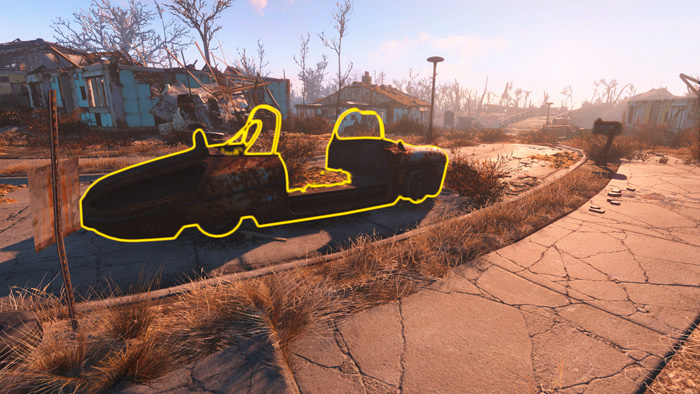


Pulse is a first-person platformer and Pixel Pi Games’ attempt at creating a new video game experience by having the player play as someone who is blind. Using what is essentially echolocation, Eva, the game’s protagonist, is able to see her surroundings, but only when sound is being created either by something in the environment or by Eva herself when she is walking around. Stand still for too long and the world goes black. It’s an interesting conceit, but the game hardly builds on it from there.
Pixel Pi does a great job of easing the player into Pulse’s main concept. Simply move around and you can see the world around you. Stop moving and it all goes away. Your job as the player is to guide Eva through this world all while being tugged along by a one-eyed raven (or maybe crow?) that only speaks in cryptic messages. Each time the raven appears Eva is frozen in place. The raven speaks via text that appears above its head, but Eva never responds. Once its cryptic message is delivered, the raven disappears until the player encounters the sage-like character again, and again, and again. The raven serves as the game’s only method of delivering its story (though what that story is, I’m not quite sure), and would also serve as a carrot on a stick for the player to chase if only that carrot were worth catching.
Playing through each of the levels, and really the game entirely is a quick process. There are rarely enemies to worry about and when there are the game does a poor job of telegraphing why the player should fear them, only that the player should. Upon seeing one dog-like creature, the screen increasingly became more and more red, implying this creature was something to be avoided, especially since the red filter disappeared when the creature lost sight of Eva. However, I can’t quite explain how it lost sight of her because all I did as the player was run in any direction I could and jump around until, somehow, it couldn’t see me anymore.

Most of Pulse’s challenges arise from navigating the world as a blind person, while also trying to solve fairly easy puzzles and platforming sequences. Along the way, the player will come across Moko, small, cute animals that follow the player, and can be picked up and thrown. There are even a few puzzles that require throwing a Moko into a makeshift hamster wheel, which then does...something? I was never quite clear on that aspect, other than the fact that their constant movement in the hamster wheels provided sound, which essentially served the same purpose a beacon or torch might to someone with sight. What purpose the beacons served, however, was unclear.
Completing Pulse should take no more than a couple of hours and there is even an achievement for completing it in less than 30 minutes, which I somehow managed to do on my first playthrough (though, I swear I was playing for more than 30 minutes). The game’s brevity and inability to telegraph its story are some of its biggest shortcomings. This, coupled with the lack of replay value make Pulse a concerning recommendation. The game’s mechanical conceit (playing as a blind character) is interesting enough to give it a look, but Pulse does little to expand on this one mechanic that sets it apart from other games. This is a shame because while I applaud Pixel Pi’s effort in building a new type of gameplay experience, it never evolves it in any meaningful way beyond what is immediately telegraphed to the player from the game’s outset
Pulse was developed and published by Pixel Pi Games and released October 20 for PC and retails for $14.99. A review copy was provided by the publisher.




 Batman: Arkham City Trophies List
Batman: Arkham City Trophies List Is Five Nights at Freddy's 4 Worth Buying, or Is It More of the Same?
Is Five Nights at Freddy's 4 Worth Buying, or Is It More of the Same? Destiny: The Taken King Guide On How To Get The Chaperone Exotic Shotgun or Complete Jolly Holliday Quest
Destiny: The Taken King Guide On How To Get The Chaperone Exotic Shotgun or Complete Jolly Holliday Quest Red Dead Redemption High-Def Wallpapers
Red Dead Redemption High-Def Wallpapers How To Fix Far Cry 4 PC 0xc000007b error DirectX and DLL errors, Mouse Acceleration Issue, FPS and Freeze issue and more
How To Fix Far Cry 4 PC 0xc000007b error DirectX and DLL errors, Mouse Acceleration Issue, FPS and Freeze issue and more